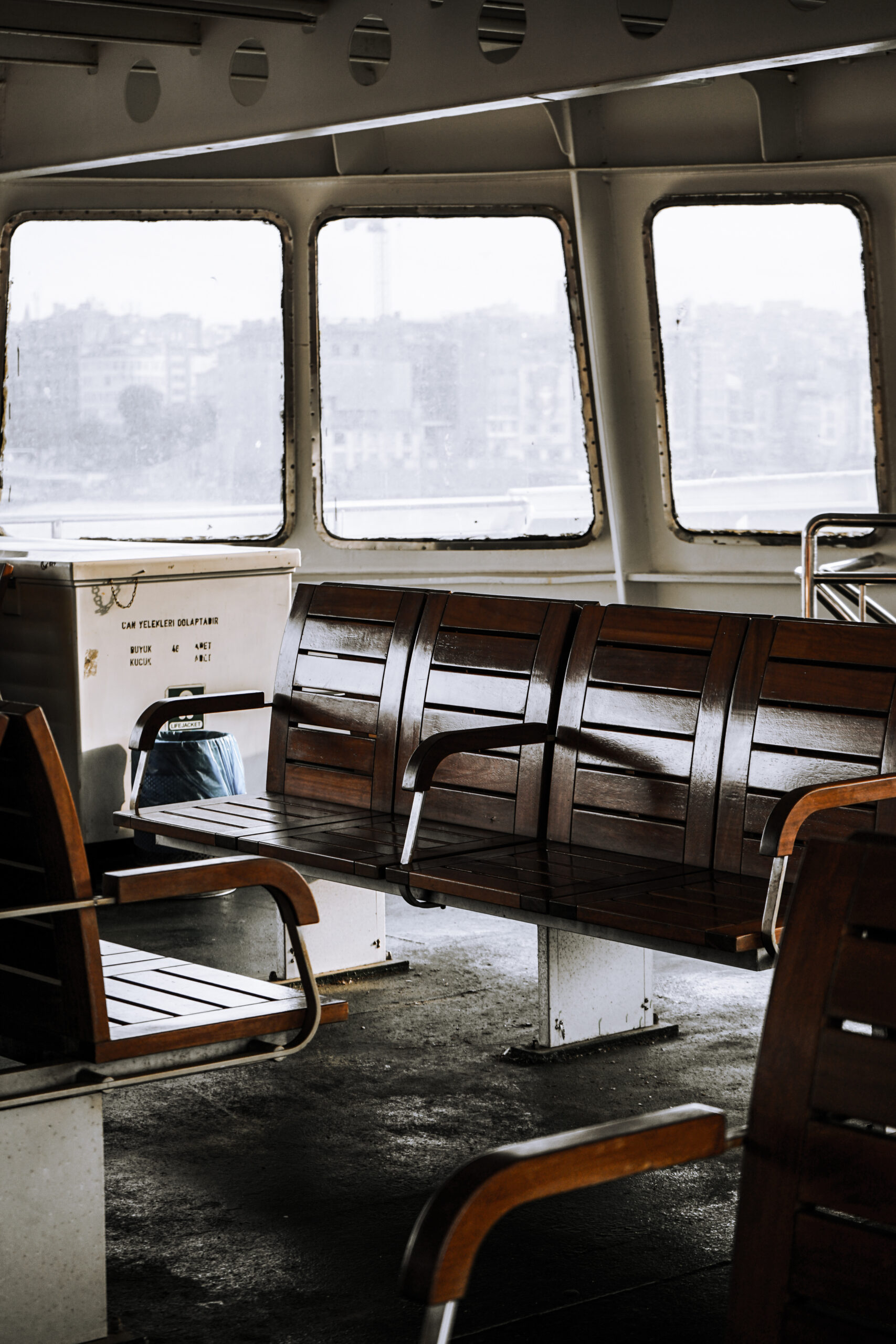
So you’ve got two kayaks and a truck, but you’re not quite sure how to safely transport them? Don’t worry, we’ve got you covered! In this article, we will share some top tips on how to successfully transport two kayaks in your truck, ensuring that they arrive at your destination in one piece. Whether you’re heading out for a weekend adventure or planning a fishing trip with friends, these tips will ensure that your kayaks are secure and ready for the journey ahead. So sit back, relax, and let us guide you through the process of safely transporting your kayaks in your truck.

Top Tips for Transporting Two Kayaks in a Truck
If you’re an avid kayaker, chances are you’ve encountered the challenge of transporting your kayaks from one location to another. Whether you’re heading out for a weekend getaway or planning an adventurous kayaking trip, it’s important to ensure that your equipment is properly secured and protected during transit. In this article, we will guide you through the process of transporting two kayaks in a truck, providing you with top tips to make your journey safe, secure, and hassle-free.
1. Choose the Right Truck
Before you embark on your kayaking adventure, it’s essential to choose the right truck for the job. Consider the size of the truck bed, as it needs to accommodate two kayaks comfortably. Measure the length and width of the truck bed to ensure that it will provide enough space for your kayaks. Additionally, check the payload capacity of the truck to make sure it can handle the weight of the kayaks and any additional gear you may have.
While selecting a truck, also keep an eye out for necessary features that can make transportation easier. Look for trucks with integrated tie-down points or rails, as they can provide convenient anchor points for securing your kayaks. Additionally, trucks with features like bed liners or cargo management systems can provide added protection and organization for your equipment.
2. Measure the Kayaks
Before you load your kayaks onto the truck, it’s important to measure their dimensions accurately. Determining the length, width, and weight of your kayaks will help you choose the right racks or carriers and ensure proper weight distribution in the truck bed.
To measure the length of your kayaks, lay them on a flat surface or use a measuring tape. Measure from the tip of the bow to the stern, ensuring to account for any protruding accessories or equipment.
Next, measure the width of your kayaks. Measure the widest part of each kayak to ensure that the racks or carriers you choose will accommodate their width without any issues.
Lastly, consider the weight of your kayaks. Knowing the weight of your kayaks will help you distribute the weight appropriately in the truck bed and ensure stability during transit.
3. Use Kayak Racks or Carriers
Once you have measured your kayaks, it’s time to select the right racks or carriers for transporting them. There are several options available, depending on your truck’s configuration and personal preference.
Option 1: Install a Roof Rack
If your truck has a roof rack or you’re willing to install one, this can be a great option for transporting your kayaks. Roof racks are designed to securely hold kayaks on top of your truck, keeping them safely out of the way. Make sure to choose a roof rack specifically designed for kayaks and follow the manufacturer’s instructions for installation.
Option 2: Install a Truck Bed Rack
Another option is to install a truck bed rack specifically designed for kayaks. These racks are installed in the bed of your truck and provide a stable platform for transporting your kayaks. Truck bed racks often come with adjustable features to accommodate different kayak sizes and can be easily installed or removed when needed.
Option 3: Use a Hitch Mount Rack
If you prefer to have easy access to your truck bed or have limited roof space, a hitch mount rack can be a convenient option. These racks attach to the hitch receiver of your truck and hold the kayaks horizontally, allowing for easy loading and unloading. Hitch mount racks are known for their stability and ease of use, making them a popular choice among many kayakers.

4. Secure the Kayaks Properly
Once your kayaks are loaded onto the truck, it’s crucial to secure them properly to ensure they stay in place during transit. Here are some essential tips for securing your kayaks:
Use Tie-Down Straps
Tie-down straps are the key to securing your kayaks safely. Use high-quality, durable straps that are specifically designed for securing loads. Wrap the straps around your kayaks, ensuring they are snug but not overly tight. Crisscross the straps over the kayaks to provide additional stability.
Use Bow and Stern Lines
To further enhance the stability and security of your kayaks, use bow and stern lines. These lines are attached to the front and back of your kayaks, securing them to anchor points on your truck bed or trailer hitch. Bow and stern lines prevent any front-to-back movement and provide added peace of mind during your journey.
Avoid Overtightening
While it’s essential to secure your kayaks tightly, it’s crucial to avoid overtightening the straps. Overtightening can damage your kayaks or put unnecessary strain on them. Find the balance between tightness and allowing a little flex in the straps to ensure the safety of your kayaks.
5. Protect the Kayaks from Damage
To keep your kayaks in pristine condition during transportation, it’s important to take precautions to prevent any damage. Here are some tips for protecting your kayaks:
Use Foam Padding or Pool Noodles
To prevent any scratches or dents, consider using foam padding or pool noodles as protective barriers between your kayaks and the truck bed or racks. These inexpensive and readily available materials provide cushioning and act as a buffer to minimize the risk of damage during transit.
Consider Kayak Covers
If you’re transporting your kayaks over long distances or exposing them to inclement weather, consider investing in kayak covers. These covers provide an extra layer of protection against rain, dust, and UV rays. Choose covers that fit your kayaks snugly and are made from durable, waterproof materials.
Avoid Contact with Sharp Edges
To prevent any potential damage to your kayaks, make sure to avoid contact with any sharp edges or abrasive surfaces. Be mindful of the surroundings while loading and unloading your kayaks, ensuring they don’t come into contact with any objects that could cause damage.

6. Load the Kayaks into the Truck Bed Safely
Loading your kayaks into the truck bed safely is essential to avoid any accidents or damage. Follow these tips to ensure a smooth loading process:
Place the kayaks parallel or perpendicular
When loading two kayaks into a truck bed, you have two options – placing them parallel or perpendicular to the truck’s length. Both options have their pros and cons, so choose the one that feels most secure and stable to you. Keep in mind the length and width of your truck bed and adjust the position of the kayaks accordingly.
Use a loading dock or ramp
If your truck bed is high, consider using a loading dock or a ramp to make the process easier. These tools provide a gradual incline, allowing you to slide the kayaks into the truck bed without excessive lifting or straining. Ensure that the loading dock or ramp is secure and stable before proceeding.
Ensure stability
As you load the kayaks into the truck bed, ensure that they are stable and in a position where they won’t shift or move during transit. Double-check that the tie-down straps are securely fastened and that the kayaks don’t rock or wobble. Maintaining stability is crucial for a safe and worry-free journey.
7. Balance the Weight Distribution
Proper weight distribution is essential for safe and stable transportation of your kayaks. Improper weight distribution can impact the handling of your truck and potentially lead to accidents. Follow these tips to balance the weight distribution effectively:
Position the heavier kayak properly
If your two kayaks differ significantly in weight, it’s important to position the heavier kayak closest to the truck’s cab. Placing the heavier kayak towards the front helps distribute the weight more evenly and improves the balance of the truck during transit.
Adjust weight distribution side-to-side
Ensure that the weight is evenly distributed from side to side. Uneven weight distribution can lead to an imbalance, affecting the handling and stability of the truck. Make necessary adjustments by shifting the kayaks slightly to achieve a well-balanced load.
Avoid excessive rearward weight
Avoid placing too much weight towards the rear of the truck bed. Excessive rearward weight can cause the front of the truck to lift, affecting the steering and braking ability. Maintain a balanced weight distribution by positioning the kayaks appropriately and ensuring the majority of the weight is centered over the axles.
8. Secure the Kayaks with Straps
After properly loading and positioning the kayaks in the truck bed, it’s time to secure them using tie-down straps. Here’s how you can do it effectively:
Attach the tie-down straps to proper anchor points
Ensure that you attach the tie-down straps to secure anchor points on your truck bed or racks. Utilize existing anchor points or install additional ones if needed. Choose anchor points that are strong and sturdy to provide maximum security.
Ensure straps are tight and secure
As you secure the kayaks with tie-down straps, make sure they are tight and secure. Check the tension of the straps before embarking on your journey to ensure they will hold the kayaks in place. Tighten or adjust the straps as necessary.
Double-check all connections
Before hitting the road, double-check all connections and straps to ensure they are properly secured. Go through each tie-down strap, checking for any signs of wear or damage. Replace any damaged straps immediately to maintain the safety of your kayaks during transit.
9. Perform a Test Drive
Before embarking on a long journey, it’s crucial to perform a test drive to ensure everything is secure and stable. Follow these steps during the test drive:
Check for any potential issues
Pay attention to any signs of movement or shifting during the test drive. Listen for any unusual noises that may indicate something is loose or improperly secured. If you notice any problems, pull over and make the necessary adjustments before continuing your journey.
Monitor the stability and handling
As you drive, pay close attention to the stability and handling of your truck. Ensure that the weight distribution feels well-balanced, and the truck maintains stability throughout the drive. Be cautious of any changes in the handling and make adjustments if required.
Make adjustments if necessary
If you notice any issues during the test drive, such as excessive movement or instability, make immediate adjustments. Pull over to a safe location and tighten the tie-down straps, reposition the kayaks, or redistribute the weight. It’s better to address any issues promptly to prevent potential accidents or damage.
10. Follow Legal and Safety Guidelines
As responsible kayakers, it’s essential to follow legal and safety guidelines while transporting your kayaks. Here are some important considerations:
Observe local regulations and laws
Be aware of any local regulations or laws regarding the transportation of kayaks. Familiarize yourself with any permits or restrictions that may be required. Compliance with regulations ensures not only your safety but also the safety of others on the road.
Use appropriate flags and reflectors
If your kayaks extend beyond the length of your truck bed or are obstructing your taillights, it’s crucial to use appropriate flags and reflectors. These visual cues alert other drivers about the presence of your kayaks and help prevent accidents.
Ensure clear visibility while driving
When transporting kayaks, your rearview visibility may be compromised. Take extra precautions to ensure clear visibility by adjusting your side mirrors accordingly. Consider investing in additional towing mirrors to eliminate any blind spots.
By following these top tips for transporting two kayaks in a truck, you can ensure the safety and security of your kayaks and travel with peace of mind. Remember, proper preparation, secure loading, and adherence to legal and safety guidelines are key to a successful and enjoyable kayaking adventure. Happy paddling!









